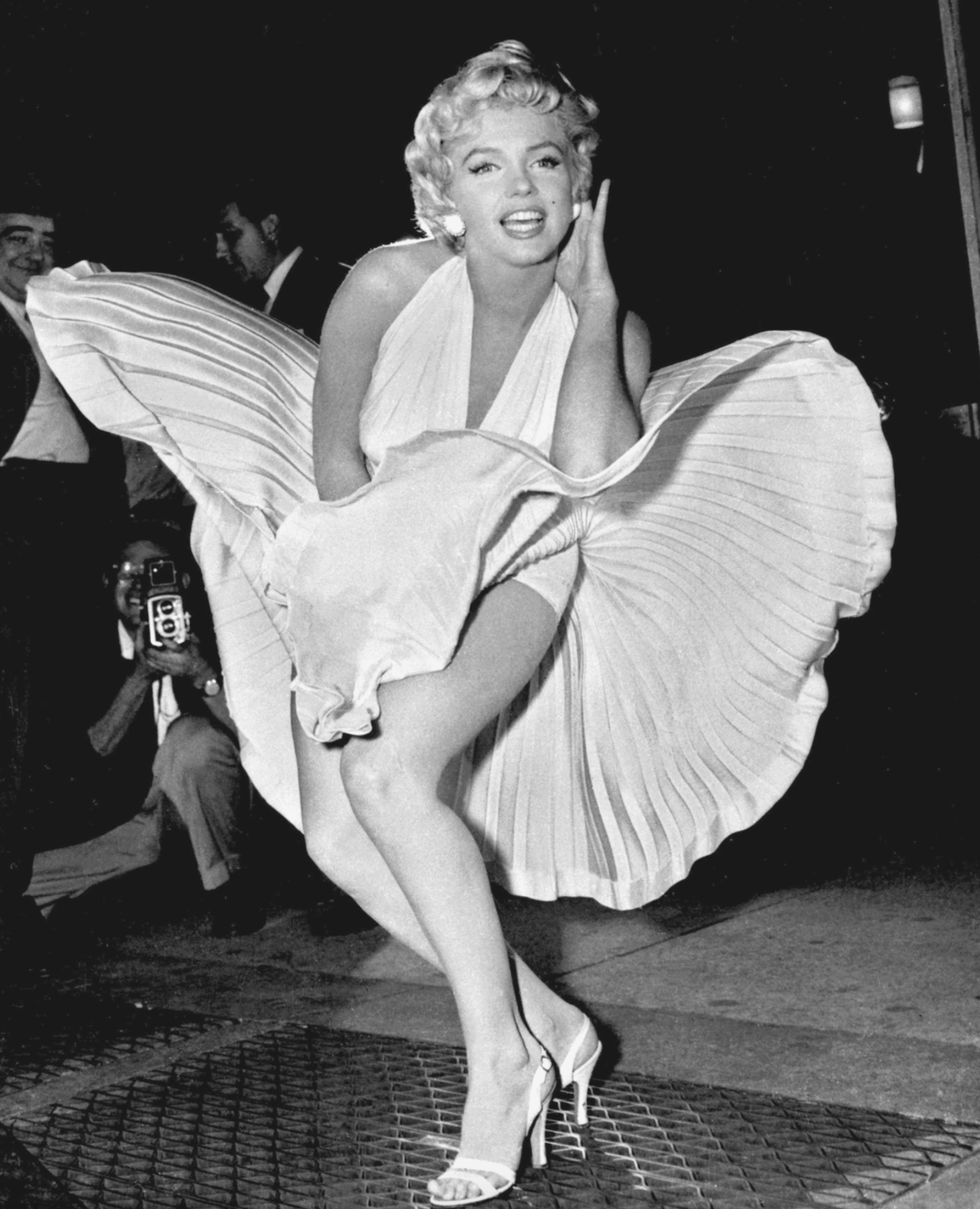Why a Newly Installed Statue of Marilyn Monroe Is So Controversial
In the era of #MeToo, some view the sculpture—now on view in California—as a symbol of sexism
:focal(2445x640:2446x641)/https://tf-cmsv2-smithsonianmag-media.s3.amazonaws.com/filer/85/f9/85f929e4-2092-4b9e-884a-e9425c697fbd/gettyimages-1233570203.jpg)
This past weekend, a 26-foot-tall likeness of Marilyn Monroe was installed outside the Palm Springs Art Museum in southern California. Though the actress smiles as a gust from an underfoot air vent makes her white dress fly up (an homage to a scene in the 1955 comedy The Seven Year Itch), not everyone in the city is happy about her presence.
The dedication event for the statue, which is titled Forever Marilyn, drew hundreds of attendees, many of whom came to protest the work’s unveiling. The crowd’s nonstop chants—both for and against the sculpture—were enough to drown out some of the ceremony’s speakers, reports Jori Finkel for the Art Newspaper.
Fierce debate has surrounded the statue in the months leading up to its unveiling on Museum Way. Per James B. Cutchin of the Desert Sun, some opponents argue that the city did not obtain residents’ approval before moving it from a still-under-construction downtown park to its current location at the museum. Detractors also point out that the statue obstructs Museum Way—a long-sought, newly installed viewing corridor—and blocks access to the beloved cultural institution.
“She was meant to be here forever in the park. And that’s what’s upset us,” Nickie McLaughlin, a leader of the Committee to Relocate Marilyn, tells the Desert Sun. “To close a street that was specifically created to open up the museum is what we have a problem with.”

Protesters’ objections extend beyond simply the statue’s location. Some feel that the artwork is exploitative—an outdated symbol of sexism. Chapters of the Women’s March Foundation (WMF), as well as other local organizations, joined the committee to voice their opposition to the plan this weekend. The past four directors of the Palm Springs Art Museum have all publicly opposed the statue’s location, too, according to the Art Newspaper.
“It’s a battle for the identity of Palm Springs,” says Liz Armstrong, who led the museum from 2014 to 2018, to Pat Saperstein of Variety. “How does it represent this city? This placement of her gigantic panty-clad rear end being the first thing you see when you come out of the museum, is so disrespectful. It’s such a slap in the face.”
To WMF, the statue represents the sexual objectification of an iconic woman in the era of #MeToo.
“The 26-foot-tall statue of Marilyn Monroe is designed for viewers to walk in between the legs, look up her dress and snap a picture of her crotch or buttocks for fun,” the organization’s executive director, Emiliana Guereca, explains to NBC Los Angeles. “It is sexist, exploitive and misogynistic. Even in death, Marilyn has no peace. We are demanding the statue be moved; #metoomarilyn has no place in Palm Springs.”
A GoFundMe campaign organized by the relocation committee has raised more than $70,000 for an ongoing lawsuit against the City of Palm Springs and P.S. Resorts, the hotels association organization that bought the statue for $1 million in 2020. On Change.org, a separate petition calling to move the statue has garnered 41,000 signatures and counting.
Some history on Marilyn Monroe. Everyone knows her as a famous actress, but she was much more than that, and had a harsh and complicated history. This is why we want better representation of Monroe's legacy than the "Forever Marilyn" statue.#metoomarilyn #marilynmonroe pic.twitter.com/HakTU8vAcU
— Women's March Action™️ (@WMarchAction) June 19, 2021
During the dedication, Aftab Dada, chairman of P.S. Resorts, argued that the presence of the statue, created by sculptor Seward Johnson in 2011, would help draw tourists and boost revenue for local businesses—an especially pressing concern in light of the Covid-19 pandemic. According to the Desert Sun, Forever Marilyn previously stayed in Palm Springs from 2012 to 2014; Dada recounted that its stay brought the city “millions and millions of dollars in publicity.”
Palm Springs was supposedly a site of significance to Monroe. Per the Palm Springs Bureau of Tourism, Bruno Bernard, the pinup photographer who later captured the image that inspired Forever Marilyn, introduced her to Johnny Hyde, vice president of the William Morris Agency, at the Palm Springs Racquet Club in 1947.
“For this reason, it’s generally claimed Marilyn Monroe was discovered in Palm Springs,” the bureau notes on its website. (Other sources suggest differently: History.com, for instance, says she was “discovered” while working in a California munitions factory during World War II.)
Today, Monroe is widely hailed as a feminist icon; in the words of biographer Michelle Morgan, “Although vulnerable and complex, Marilyn was a strong woman who consistently fought for what she believed in.”
While the city has called the installation of the statue temporary and stated that its agreement with P.S. Resorts only lasts three years, Trina Turk, another leader of the relocation committee, tells the Art Newspaper the group plans to continue protesting.
Speaking with Variety, she adds, “I admire Marilyn Monroe as an artist and a pop culture icon, but I don’t think the statue is the best representation of who she is.”
/https://tf-cmsv2-smithsonianmag-media.s3.amazonaws.com/accounts/headshot/tara.png)
/https://tf-cmsv2-smithsonianmag-media.s3.amazonaws.com/accounts/headshot/tara.png)